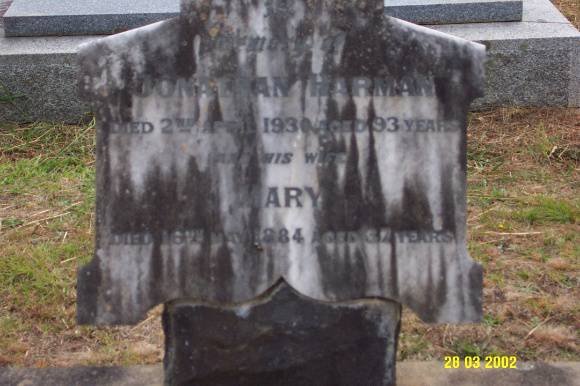| Back to search results » | Back to search page » |
|
BYADUK CEMETERY
Statement of Significance
What is significant?
The Byaduk Cemetery, located on Cemetery Road, some 1.5 kilometers east of the Hamilton - Port Fairy Road is a four acre cemetery reserve. It is located on a hill overlooking the township of Byaduk. It is one of two cemeteries in the Byaduk area, the other being the Lutheran Cemetery. The earliest burials date from the late 1840s, when Billy Elms, known by Europeans as "Black Billy" was buried there. There are several important memorials within the cemetery, perhaps the most important is to Captain John McIntosh Ross, a Captain of the Victorian Mounted Rifles, who with his wife Jeannie, owned the Byaduk general store for many years. Ross was an important and revered member of the community who unexpectedly died at age 46 after an operation to remove a cyst associated with Hydatids. There is a large white marble tablet, scalloped at four corners erected by the community in the cemetery. The tablet was originally located in one of the public precinct areas at the centre of Byaduk. The graves are grouped in the conventional manner. According to denominations. One isolated grave, that of Mary Tomkins, who died in 1872, is located about 50 metres distant from the other graves, although still within the boundary fence. There are no significant plantings. The cemetery is in excellent condition, and retains a very high degree of integrity.
How is it significant?
The Byaduk Cemetery is of historical, social and architectural significance to the district of Byaduk and the Southern Grampians Shire.
What is significant?
The Byaduk Cemetery is of historical significance as an enduring record of those who have lived and died in the community, as a reflection of passing phases, ways of life and death, particular events, and as documentary evidence.
The Cemetery is of social significance for reflecting the customs and tastes of the community, for reflecting different religious values, and for reflecting different economic and social status. It is also important as a place of passive recreation.
The Cemetery is of architectural significance for its range of tombstones, memorials and iconography reflecting the aesthetics of different periods and groups within the community. It is also of interest for its overall design and position within the broader landscape.
Group
Cemeteries and Burial Sites
Category
Cemetery/Graveyard/Burial Ground
















